9780123749031
01
Copyright
02
Dedication
03
Trademarks
04
List of Figures
05
List of Tables
06
Preface to the Second Edition
07
Preface to the First Edition
08
About the CD-ROM
Ch 01
1 Introduction
A Brief History of the World
A Summary of the Topics
Examples and Exercises
Ch 02
2 Basic Concepts from Physics
Rigid Body Classification
Rigid Body Kinematics
Single Particle
Particle Systems and Continuous Materials
Newton's Laws
Forces
Gravitational Forces
Spring Forces
Friction and Other Dissipative Forces
Torque
Equilibrium
Momenta
Linear Momentum
Angular Momentum
Center of Mass
Moments and Products of Inertia
Mass and Inertia Tensor of a Solid Polyhedron
Energy
Work and Kinetic Energy
Conservative Forces and Potential Energy
Ch 03
3 Rigid Body Motion
Newtonian Dynamics
Lagrangian Dynamics
Equations of Motion for a Particle
Time-Varying Frames or Constraints
Interpretation of the Equations of Motion
Equations of Motion for a System of Particles
Equations of Motion for a Continuum of Mass
Examples with Conservative Forces
Examples with Dissipative Forces
Euler's Equations of Motion
Ch 04
4 Deformable Bodies
Elasticity, Stress, and Strain
Mass–Spring Systems
One-Dimensional Array of Masses
Two-Dimensional Array of Masses
Three-Dimensional Array of Masses
Arbitrary Configurations
Control Point Deformation
B-Spline Curves
NURBS Curves
B-Spline Surfaces
NURBS Surfaces
Surfaces Built from Curves
Free-Form Deformation
Implicit Surface Deformation
Level Set Extraction
Isocurve Extraction in 2D Images
Isosurface Extraction in 3D Images
Ch 05
5 Fluids and Gases
Vector Calculus
Gradient, Directional Derivative, and Total Derivative
Vector Fields, Divergence, and Laplacian
Curl
Line Integrals
Surface Integrals and Stokes' Theorem
Volume Integrals and the Divergence Theorem
Green's Theorem, Laplace's Equation, and Poisson's Equation
Vector Field Decomposition
Strain and Stress
Strain Tensor
Stress Tensor
The Relationship Between Strain and Stress
Conservation Laws
Conservation of Mass
Conservation of Momentum
A Simplified Model for Fluid Flow
Implementing the Simplified 2D Model
The Density Equation
The Diffusion Term
The Advection Term
The Source–Sink Term
The Total Density Update
The Velocity Equations
Specialized Boundary Handling
Implementing the Simplified 3D Model
Variations of the Simplified Model
Vorticity Confinement and Vortex Particles
Separate Pressure Term
Omit Diffusion Terms
Density and Velocity Dissipation
Include Temperature
Compressible Flow
Obstacles in the Fluid Region
Moving Boundaries and Multiple Fluids
Finding Papers on Fluid Simulation
Ch 06
6 Physics Engines
The Physics Tick
Collision Culling
Culling with Bounding Spheres
Culling with Axis-Aligned Bounding Boxes
AABB Culling in a Single-Threaded Environment
AABB Culling Using a Separate Core of a CPU
AABB Culling Using a Specialized Processor
Test-Intersection Queries
Spheres
Capsules
Ellipsoids
Cylinders
Collision Detection with Convex Polyhedra
The Method of Separating Axes
Stationary Objects
Objects Moving with Constant Linear Velocity
Oriented Bounding Boxes
Boxes Moving with Constant Linear and Angular Velocity
GJK Algorithm
Unconstrained Motion
Acceleration-Based Constrained Motion
Collision Points
Collision Response for Colliding Contact
Collision Response for Resting Contact
An Illustrative Implementation
Lagrangian Dynamics
Velocity-Based Constrained Motion
Constraint on a Particle
Constraints on a Particle System
Constraint on a Rigid Body
Constraints on a Rigid Body System
Comments and Variations on the Algorithm
Variations
Ch 07
7 Linear Algebra
A Review of Number Systems
The Integers
The Rational Numbers
The Real Numbers
The Complex Numbers
Fields
Systems of Linear Equations
A Closer Look at Two Equations in Two Unknowns
Gaussian Elimination and Elementary Row Operations
Nonsquare Systems of Equations
The Geometry of Linear Systems
Numerical Issues
Iterative Methods for Solving Linear Systems
Matrices
Some Special Matrices
Elementary Row Matrices
Inverse Matrices
Properties of Inverses
Construction of Inverses
LU Decomposition
Vector Spaces
Definition of a Vector Space
Linear Combinations, Spans, and Subspaces
Linear Independence and Bases
Inner Products, Length, Orthogonality, and Projection
Dot Product, Cross Product, and Triple Products
Orthogonal Subspaces
The Fundamental Theorem of Linear Algebra
Projection and Least Squares
Linear Transformations
Advanced Topics
Determinants
Eigenvalues and Eigenvectors
Eigendecomposition for Symmetric Matrices
S + N Decomposition
Applications
Ch 08
8 Affine Algebra
Introduction
Coordinate Systems
Subspaces
Transformations
Barycentric Coordinates
Triangles
Tetrahedra
Simplices
Length, Area, Volume, and Hypervolume
Ch 09
9 Calculus
Univariate Calculus
Limits
Limits of a Sequence
Continuity
Differentiation
L'Hôpital's Rule
Integration
Multivariate Calculus
Limits and Continuity
Differentiation
Integration
Applications
Optimization
Constrained Optimization
Derivative Approximations by Finite Differences
Ch 10
10 Quaternions
Rotation Matrices
The Classical Approach
Algebraic Operations
Relationship of Quaternions to Rotations
A Linear Algebraic Approach
Interpolation of Quaternions
Spherical Linear Interpolation
Spherical Quadratic Interpolation
Derivatives of Time-Varying Quaternions
Ch 11
11 Differential Equations
First-Order Equations
Existence, Uniqueness, and Continuous Dependence
Second-Order Equations
General-Order Differential Equations
Systems of Linear Differential Equations
Equilibria and Stability
Stability for Constant-Coefficient Linear Systems
Stability for General Autonomous Systems
Ch 12
12 Ordinary Difference Equations
Definitions
Linear Equations
First-Order Linear Equations
Second-Order Linear Equations
Constant Coefficient Equations
Systems of Equations
Ch 13
13 Numerical Methods
Euler's Method
Higher-Order Taylor Methods
Methods via an Integral Formulation
Runge–Kutta Methods
Second-Order Methods
Third-Order Methods
Fourth-Order Method
Multistep Methods
Predictor–Corrector Methods
Extrapolation Methods
Richardson Extrapolation
Application to Differential Equations
Polynomial Interpolation and Extrapolation
Rational Polynomial Interpolation and Extrapolation
Modified Midpoint Method
Bulirsch–Stoer Method
Verlet Integration
Forces Without a Velocity Component
Forces with a Velocity Component
Simulating Drag in the System
Leapfrog Method
Velocity Verlet Method
Gear's Fifth-Order Predictor-Corrector Method
Numerical Stability and its Relationship to Physical Stability
Stability for Single-Step Methods
Stability for Multistep Methods
Choosing a Stable Step Size
Stiff Equations
Ch 14
14 Linear Complementarity and Mathematical Programming
Linear Programming
A Two-Dimensional Example
Solution by Pairwise Intersections
Statement of the General Problem
The Dual Problem
The Linear Complementarity Problem
The Lemke Algorithm
Zero Constant Terms
The Complementary Variable Cannot Leave the Dictionary
Mathematical Programming
Karush–Kuhn–Tucker Conditions
Convex Quadratic Programming
General Duality Theory
Applications
Distance Calculations
Contact Forces
Bibliography
Bibliography
Color Plates
Color Plates
Index
Index
A
B
C
D
E
F
G
H
I
J
K
L
M
N
O
P
Q
R
S
T
U
V
W
X
Y
Z

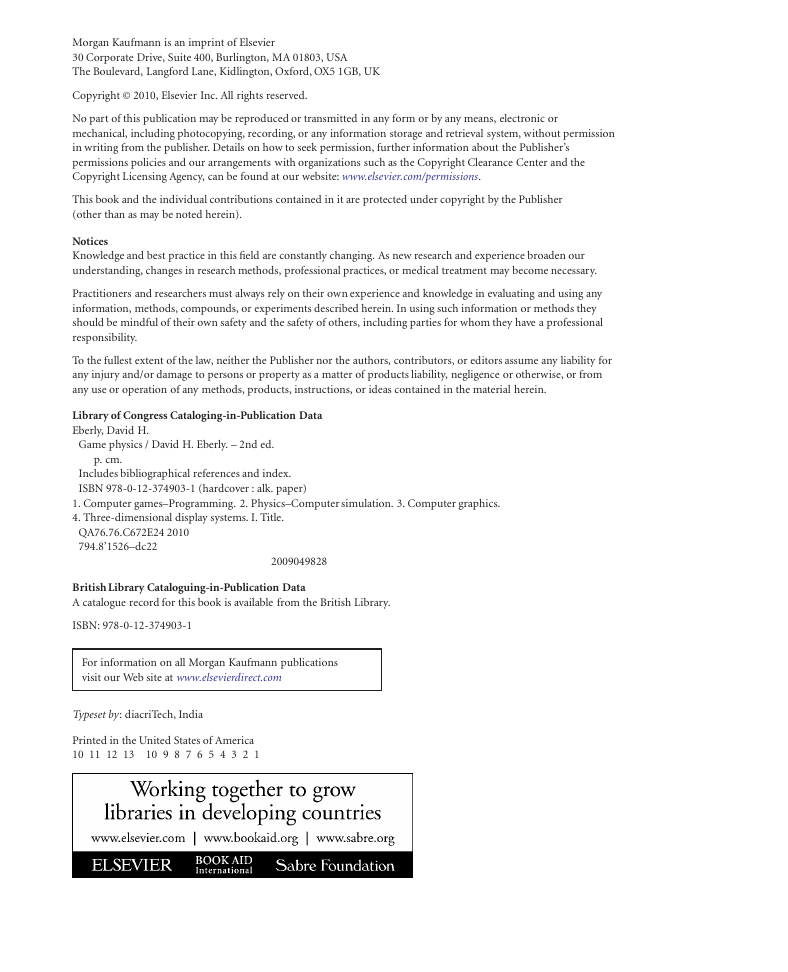
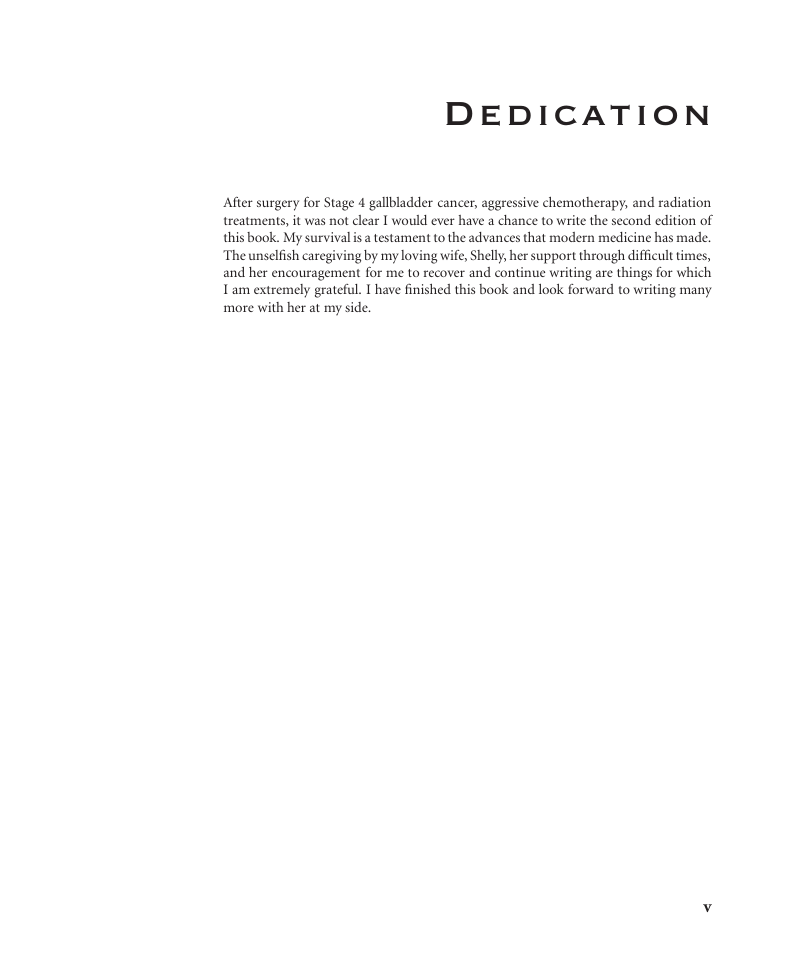
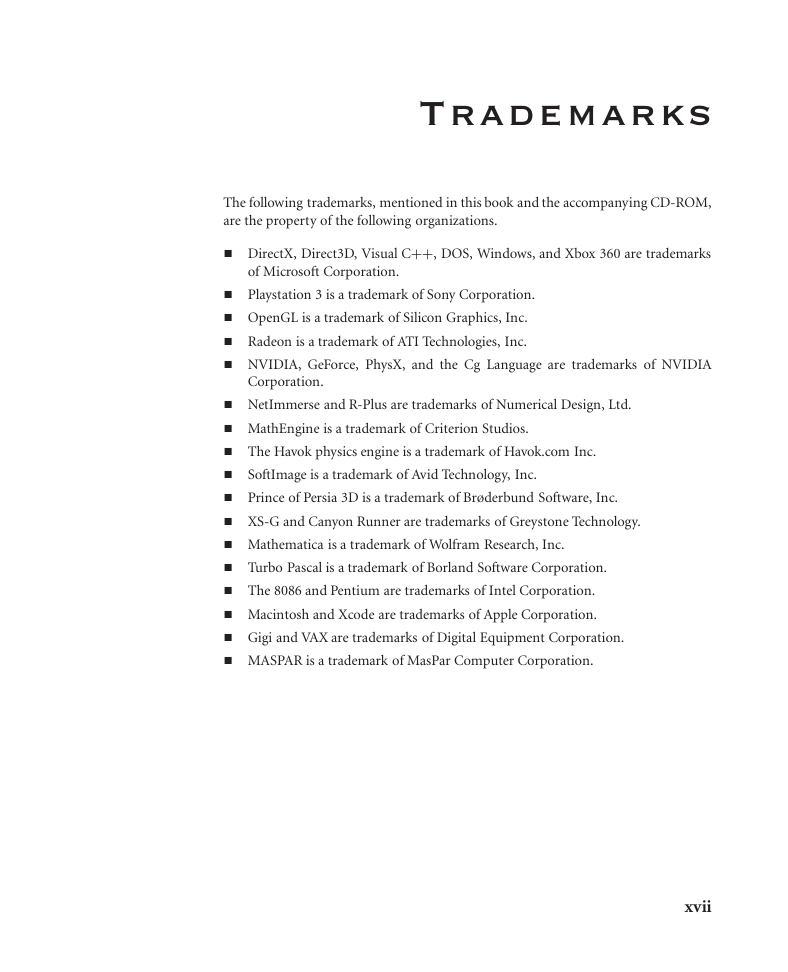
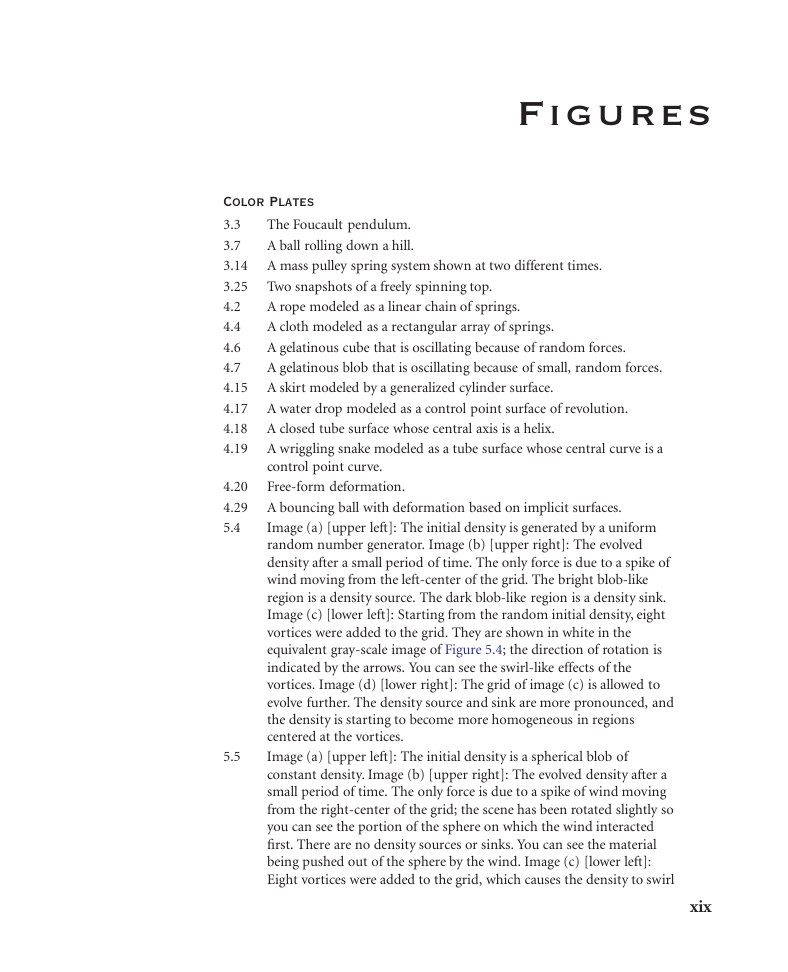

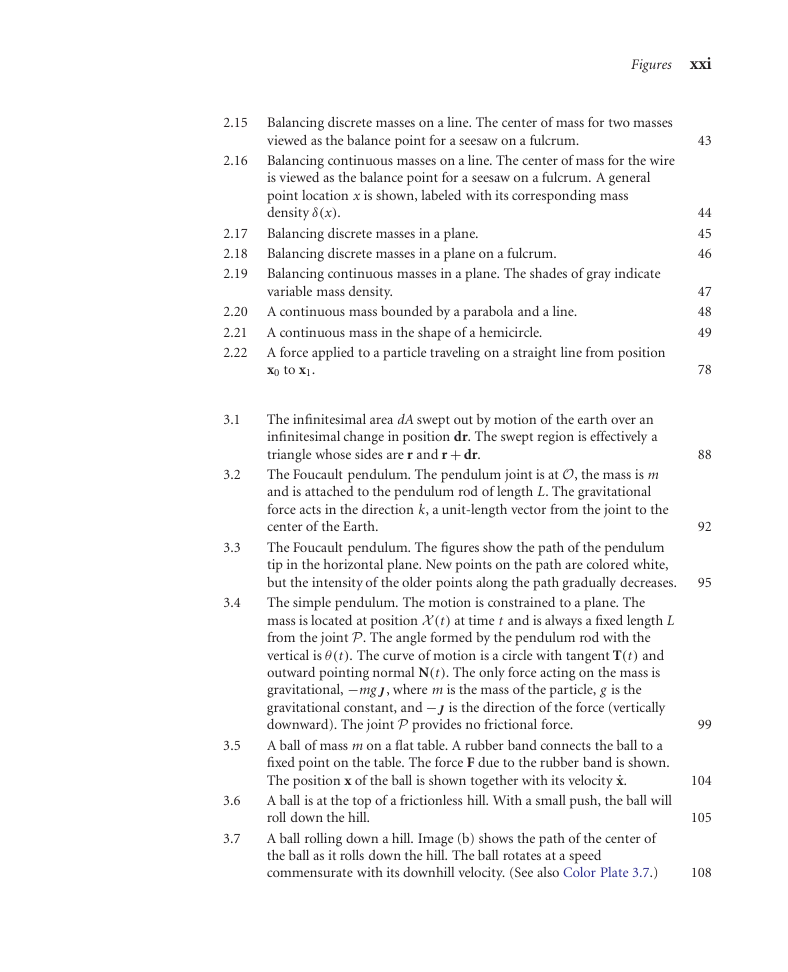
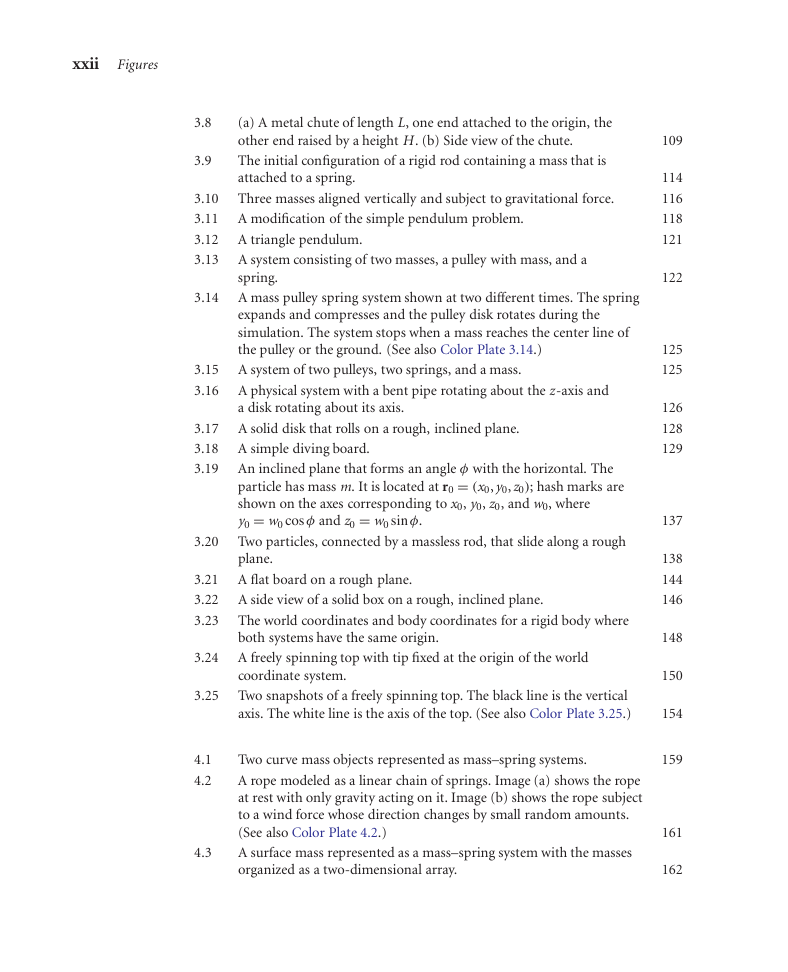








 2023年江西萍乡中考道德与法治真题及答案.doc
2023年江西萍乡中考道德与法治真题及答案.doc 2012年重庆南川中考生物真题及答案.doc
2012年重庆南川中考生物真题及答案.doc 2013年江西师范大学地理学综合及文艺理论基础考研真题.doc
2013年江西师范大学地理学综合及文艺理论基础考研真题.doc 2020年四川甘孜小升初语文真题及答案I卷.doc
2020年四川甘孜小升初语文真题及答案I卷.doc 2020年注册岩土工程师专业基础考试真题及答案.doc
2020年注册岩土工程师专业基础考试真题及答案.doc 2023-2024学年福建省厦门市九年级上学期数学月考试题及答案.doc
2023-2024学年福建省厦门市九年级上学期数学月考试题及答案.doc 2021-2022学年辽宁省沈阳市大东区九年级上学期语文期末试题及答案.doc
2021-2022学年辽宁省沈阳市大东区九年级上学期语文期末试题及答案.doc 2022-2023学年北京东城区初三第一学期物理期末试卷及答案.doc
2022-2023学年北京东城区初三第一学期物理期末试卷及答案.doc 2018上半年江西教师资格初中地理学科知识与教学能力真题及答案.doc
2018上半年江西教师资格初中地理学科知识与教学能力真题及答案.doc 2012年河北国家公务员申论考试真题及答案-省级.doc
2012年河北国家公务员申论考试真题及答案-省级.doc 2020-2021学年江苏省扬州市江都区邵樊片九年级上学期数学第一次质量检测试题及答案.doc
2020-2021学年江苏省扬州市江都区邵樊片九年级上学期数学第一次质量检测试题及答案.doc 2022下半年黑龙江教师资格证中学综合素质真题及答案.doc
2022下半年黑龙江教师资格证中学综合素质真题及答案.doc